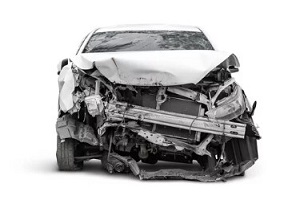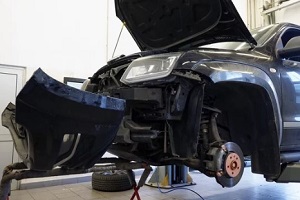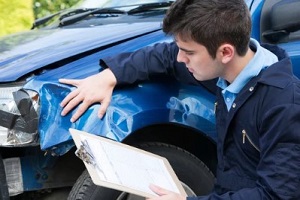 Collision repair is typically necessary after an auto accident. Moreover, you may need collision repair if your car is damaged by weather elements, such as if a tree branch lands on your car windshield during a heavy thunderstorm.
Collision repair is typically necessary after an auto accident. Moreover, you may need collision repair if your car is damaged by weather elements, such as if a tree branch lands on your car windshield during a heavy thunderstorm.
In this review, we will discuss the collision repair process for a custom car.
What Is Collision Repair for a Custom Car?
Auto collision repair is a professional service performed by a licensed automotive technician in which a car’s performance and appearance are restored after damage from collision, weather, or another incident. Collision repair for a custom car specifically pertains to the transformation of a car after an accident.
In some cases, the car looks much different than the original after the final restorations. In other words, this is an opportunity for the car’s owner to transform and personalize the vehicle just the way they want it after a collision.
What Is the Collision Repair Process for a Custom Car?
The collision repair process may look different in every case. After all, there are no cookie-cutter methods for repairing a car damaged by collision, especially a custom car. With that said, there are common steps that you can expect during the collision repair process. Below is a detailed look at each step you can prepare for and expect.
Receive an Estimate
As mentioned, there is no cookie-cutter process for fixing a car with collision damage, especially if you are seeking a custom restoration. Therefore, you should first take your car to the collision repair shop and receive an estimate. The estimate should provide a relatively accurate price for the needed services after diagnostics are performed.
Disassemble the Vehicle
 The next step is disassembly. This may be requested by the insurance provider to provide a more precise diagnosis of all that is wrong with the vehicle after collision damage. After this stage in the process, which involves agreement from the insurance company to cover the associated costs, the mechanic can start the collision repair process for your custom car.
The next step is disassembly. This may be requested by the insurance provider to provide a more precise diagnosis of all that is wrong with the vehicle after collision damage. After this stage in the process, which involves agreement from the insurance company to cover the associated costs, the mechanic can start the collision repair process for your custom car.
Make the Mechanical and Structural Repairs
The mechanical and structural repairs vary based on all that is wrong with the specific vehicle. If the vehicle is restored to factory specifications, then the mechanic may use an electronic measuring system to analyze the car.
One of the primary goals of the repair process is to ensure the car frame is structurally sound after the repairs are made. Additional mechanical and structural repairs that the mechanic may perform include but are not limited to:
- Wheel alignment
- Suspension repairs
- Windshield replacement
- Fender and bumper repair
- Scratch and dent repair
- Headlight restoration
As mentioned, the exact services are dependent on the extent and location of the damage. In some cases, additional concerns that are unrelated to the collision may be addressed as well, such as the replacement of outdated tires. However, it is important to keep in mind that any repairs made that were not the direct result of the collision may not be covered by the insurance company.
Reassemble the Car Parts
After all repairs have been made and the car is prepared for painting, the car is reassembled. All car systems are also thoroughly inspected during this stage. Additionally, a quality control inspection is performed. This entails a test drive with a focus on the car’s performance.
If any issues are detected, then the mechanic fixes them before returning the vehicle. Moreover, the body shop conducts a thorough cleaning of the vehicle (both inside and out). All surfaces are cleaned, washed, and polished. The final coat of painting is also applied.
Deliver the Vehicle Back to the Owner
At this point, the car owner is able to come and pick up the vehicle. The body shop explains the bill to the owner, and the payment is completed. Once all paperwork is complete and the owner confirms that the car has been restored and performs well, they can drive it home in its pre-accident state (or, in many cases, a much better state than it was before the collision or body damage).
Auto Insurance and Collision Repair: Here Is What You Should Know
 It is important to understand your insurance policy, particularly the deductible, limits, and extent of coverage. It is also imperative to choose a licensed and reputable collision repair shop to ensure the services are covered by your insurance provider. Be sure to receive approval for the repairs for your insurance provider before the shop begins the collision repair process.
It is important to understand your insurance policy, particularly the deductible, limits, and extent of coverage. It is also imperative to choose a licensed and reputable collision repair shop to ensure the services are covered by your insurance provider. Be sure to receive approval for the repairs for your insurance provider before the shop begins the collision repair process.
Need Collision Repair? Contact Rob’s Customs and Restorations
Here at Rob’s Customs and Restorations, we offer Collision repair services for custom cars. If your car has endured collision damage and you would like to restore and transform its appearance, then contact us today. We are glad to answer your initial questions and start the collision repair process.
